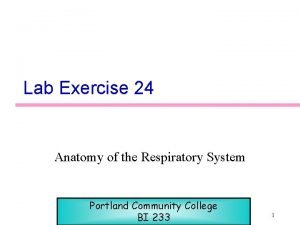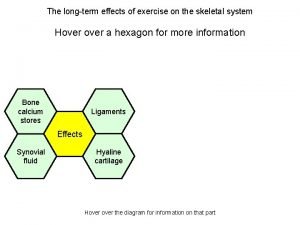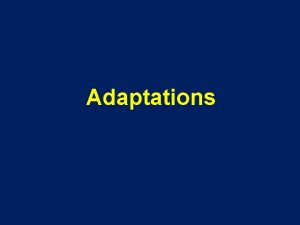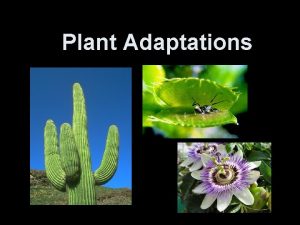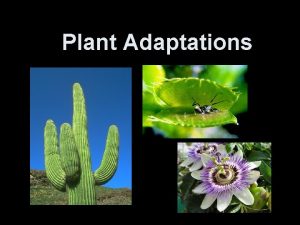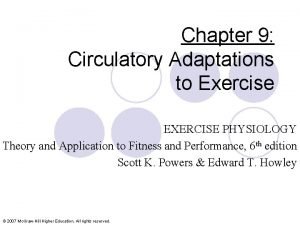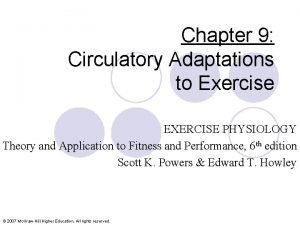Exercise Physiology Respiratory adaptations to long term exercise












- Slides: 12

Exercise Physiology Respiratory adaptations to long term exercise

Increase in minute ventilation Respiratory muscles How many Respiratory adaptations Can you think of? Increase in resting lung volumes Increase in oxygen diffusion rate

Respiratory adaptations • Today we will look at the following: 1. Breathing rate 2. Minute ventilation 3. Respiratory muscles 4. Resting lung volumes 5. Oxygen diffusion rate

Breathing rate • Sit back and relax, count how many times you breathe in and out in one minute. • 12 -16 breaths is average. • How do you think exercise affects this? • Increase; 40 -60 during exercise • Resting and sub-maximal exercise breathing rates will become lower • What else can affect your breathing rate?

Minute ventilation • What is minute ventilation? ‘It is the volume of air inhaled or exhaled in one minute’ • How do we work it out? Breathing rate x tidal volume • During exercise… Untrained – 100 L/Min Trained – 150 L/min (an increase of 50%)

Respiratory muscles • What muscles other than the diaphragm are involved in breathing? The intercostals; external & internal • What changes would you expect to see take place to these muscles? An increase in strength • How is this going to allow more air to be inspired or expired? The intercostals can act more forceful on the rib cage, forcing more air in or out.

Muscles involved in Inspiration • At rest • During exercise - Diaphragm - Pectorals contracts & flattens - The external intercostals contracts - Trapezius & other back muscles

Muscles involved in Expiration depends more on lung elasticity! • At rest • During exercise - Diaphragm & external intercostals relax - Combined contraction of internal & abdominal muscles

Increase in resting lung volumes • There is an overall increase in surface area meaning that more deoxygenated blood can enter sites of gaseous exchange • As a result more oxygen can be diffused into the blood.


Increase in oxygen diffusion rate • What is the advantage of an increase in diffusion rate? More O 2 can move from the capillaries to the tissue and CO 2 from the cells to the blood. • Long term exercise allows O 2 & CO 2 to diffuse rapidly.

ADAPTATIONS PRODUCED BY AEROBIC TRAINING HR at rest (bpm) Stroke volume at rest (ml) max vol blood leaving heart per beat (ml) heart volume (ml) breaths per minute at rest max no. of breaths per minute lung volume (vital capacity) (l) VO 2 max (ml kg-1 min-1) resting level of blood lactic acid (mg 100 ml-1) max tolerated blood lactic acid (mg 100 ml-1) before training after training 72 64 120 750 14 40 5. 8 40 20 110 58 89 140 850 12 45 5. 8 50 20 125 elite athlete 36 128 200 12 55 7. 0 77 20 185
 Bronchi histology
Bronchi histology Pulmonary tract
Pulmonary tract Respiratory system anatomy and physiology
Respiratory system anatomy and physiology Long term effects of exercise on skeletal system
Long term effects of exercise on skeletal system Short, medium and long term planning in education
Short, medium and long term planning in education Long term memory vs short term memory
Long term memory vs short term memory Example of short term human resources
Example of short term human resources Difference between long term and short term liabilities
Difference between long term and short term liabilities Accounting for serial bonds
Accounting for serial bonds Long-term goals
Long-term goals Short term and long term cash forecasting
Short term and long term cash forecasting Tall + short h
Tall + short h Once upon a time there lived a girl
Once upon a time there lived a girl
